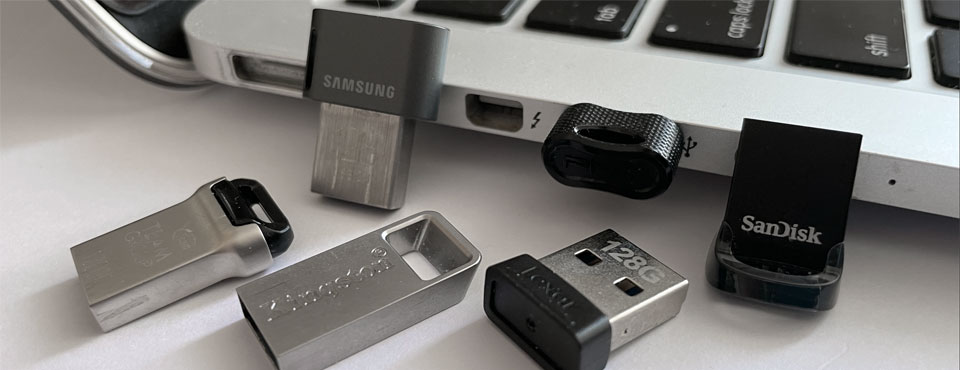
October 2024 Ian Chiu
We put three 512GB mini USB drives from PNY, Samsung, and Sandisk to test. Unlike thumb drives and portable SSDs, these compact drives by design can always stay plugged as a semi-permanent storage, yet they are fast enough for everyday tasks. In our October 2024 update, we removed Kingston DataTraveler Micro and Lexar JumpDrive S47. This shift in focus is due to the comparison being centered on 512GB drives, and neither of those offers anything larger than 256GB.
Contents
Our Picks
If performance is above all else, Samsung Fit Plus is the one to go for as they come out on top in comparison to other mini USB drives in our tests. The Sandisk Ultra Fit, however, has an edge over the Fit Plus when it comes to overall read performance and large file writes whereas the Fit Plus does noticeably better in small file writes. Perhaps our only complaint with the Fit Plus is the size being noticeably larger than both the PNY Elite-X Fit and Sandisk Ultra Fit. For the budget-conscious, the 512GB Samsung Fit Plus is around $60 as of this writing and for $20 more, you might be able to pick up a terabyte USB SSD. Though, the applications between the two are largely different.
Who Would Need Such a Small Drive?
Buyers who want a drive that only protrudes as little as possible from a USB port should consider one. Thumb drives in general stick out quite conspicuously so they could easily get bent when being bumped repeatedly. This could easily result in data loss and maybe even worse, a broken USB port.
By design, compact drives can always stay inserted into a USB-enabled car stereo or into a notebook as semi-permanent storage for media. They can also free up precious space on the laptop’s speedy SSD for mission-critical tasks. For this reason, a mini USB drive can actually prove to be quite practical for some of us who might need an effortless storage expansion option.
Feature Comparison
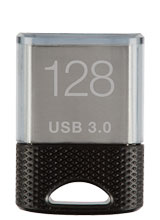 PNY Elite-X FIT $49.99 for 512GB | 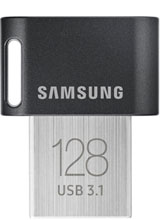 Samsung FIT Plus $59.99 for 512GB | 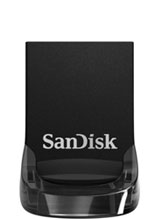 Sandisk Ultra Fit $37.48 for 512GB |
|
| Read Speed: (10GB video) | 190.56MB/s | 336.49MB/s | 339.31MB/s |
| Write Speed: (10GB video) | 28.47MB/s | 114.65MB/s | 190.46MB/s |
| Read Speed: (5GB photos) | 173.08MB/s | 294.54MB/s | 308.49MB/s |
| Write Speed: (5GB photos) | 16.36MB/s | 92.48MB/s | 25.16MB/s |
| Storage: | 32 - 512GB | 32 - 512GB | 16GB - 1TB |
| Interface: | USB 3.2 Gen 1 | USB 3.2 Gen 1 | USB 3.2 Gen 1 |
| Dimensions: | 20.8 x 15.2 x 6.4mm | 23.6 x 18.8 x 7.8mm | 19.1 x 15.9 x 8.8mm |
| Build Material: | Plastic grip, aluminum body | Plastic grip, aluminum body | Plastic body |
| Activity Light? | No | No | No |
| End Cap? | Yes | No | No |
| Color(s): | Black | Gray | Black |
| Aug 2016 | June 2018 | May 2023 | |
| Warranty: | 1 year | 5 years | 5 years |
| Country of Origin Label: | Made in Taiwan | Made in Taiwan | Made in Malaysia |
Pricing is last updated by Amazon on 2025-05-03 at 07:00. When you buy through Amazon affiliate links on our site, we may earn an affiliate commission.
Benchmark Analysis
Through Nodesoft’s DiskBench, our large file (10GB MP4) transfer tests have shown that Samsung FIT Plus and Sandisk Ultra Fit demonstrated a considerable speed improvement over previous models. Samsung’s 512GB drive was at least 2.5 times faster than the 256GB model in write operations. Its small file read was 294.54MB/s – 70% faster than the previous model. However, its write speed ranged between 92 and 114MB/s, which was not something to write home about.
Sandisk 512GB Ultra Fit also delivered a significant upgrade, with speeds about 2.5 to 8 times faster than the previous generation. Its maximum read speed reached 340MB/s, and its large file write speed approached 200MB/s. Having said that, Ultra FIt’s small file write performance was still pitifully slow.
There was something peculiar about PNY’s 512GB Elite-X Fit. According to our benchmarks, the 256GB model was actually faster than the 512GB version. This is a stark contrast to Samsung FIT Plus whose performance was universally better than the last generation.
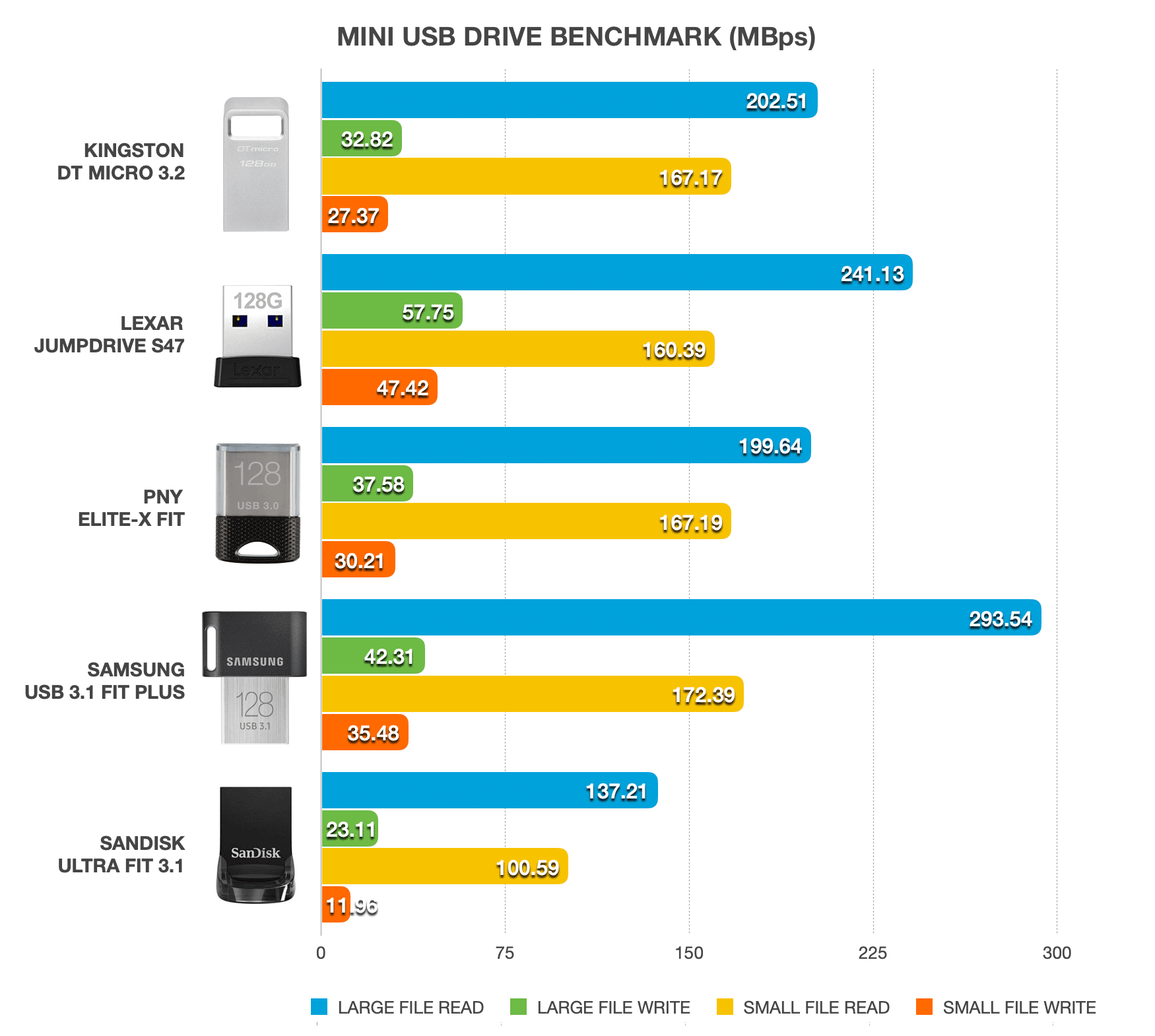
Note these two tests focused primarily on sequential performance, because we felt most people would rely on a mini drive primarily as intermediary or secondary storage for media data. These mini drives, without a decent flash controller, are inherently incapable of handling applications that require fast random access. For this reason, we didn’t bother with additional testing.
Design & Build
The featured low-profile USB drives are all similarly small, but as soon as they are put next to each other, Sandisk’s Ultra Fit’s diminutive size compares favorably to others – even if only by a fraction. When inserted, the Ultra Fit only protrudes just 6mm from the edge of a laptop. This makes the drive easily a no-brainer choice for an add-on drive for semi-permanent storage on your laptop. The Samsung Fit Plus in comparison is noticeably larger, probably in favor of heat dissipation. All three drives come a keyring loophole if you need one.

In terms of durability, Sandisk took a step backward with its squishy plastic connector with the latest version of Ultra Fit 3.2. This is a concern that is already echoed by a number of user reviews on Amazon. Having said that, if you intend to leave the drive plugged at all times, this shouldn’t be that big of a problem. We would have to say the other drives with their metal USB connectors protecting the flash components could likely survive if being stepped on.
Best Deals Online
| Preview | Product | Rating | Price | |
|---|---|---|---|---|

|
PNY 512GB Elite-X Fit USB 3.1 Flash Drive - 200MB/s | No ratings yet |
$54.99
$49.99 |
See it on Amazon |

|
SAMSUNG FIT Plus USB 3.2 Flash Drive, 512GB USB Standard Type-A, Speeds Up... | No ratings yet |
$79.99
$59.99 |
See it on Amazon |

|
SanDisk 512GB Ultra Fit USB 3.2 Gen 1 Flash Drive - Up to 400MB/s,... | No ratings yet |
$49.99
$37.48 |
See it on Amazon |
Pricing is last updated by Amazon on 2025-05-03 at 07:00. When you buy through Amazon affiliate links on our site, we may earn an affiliate commission.
Nexcopy manufactures a variety of PC-based and standalone USB duplicator solutions.
PC based systems support advanced USB functions such as write protection, CD-ROM partition and multi-partition creation, while standalone systems are ultra-fast, high speed USB copiers duplicating gigabytes of data quickly and accurately.

